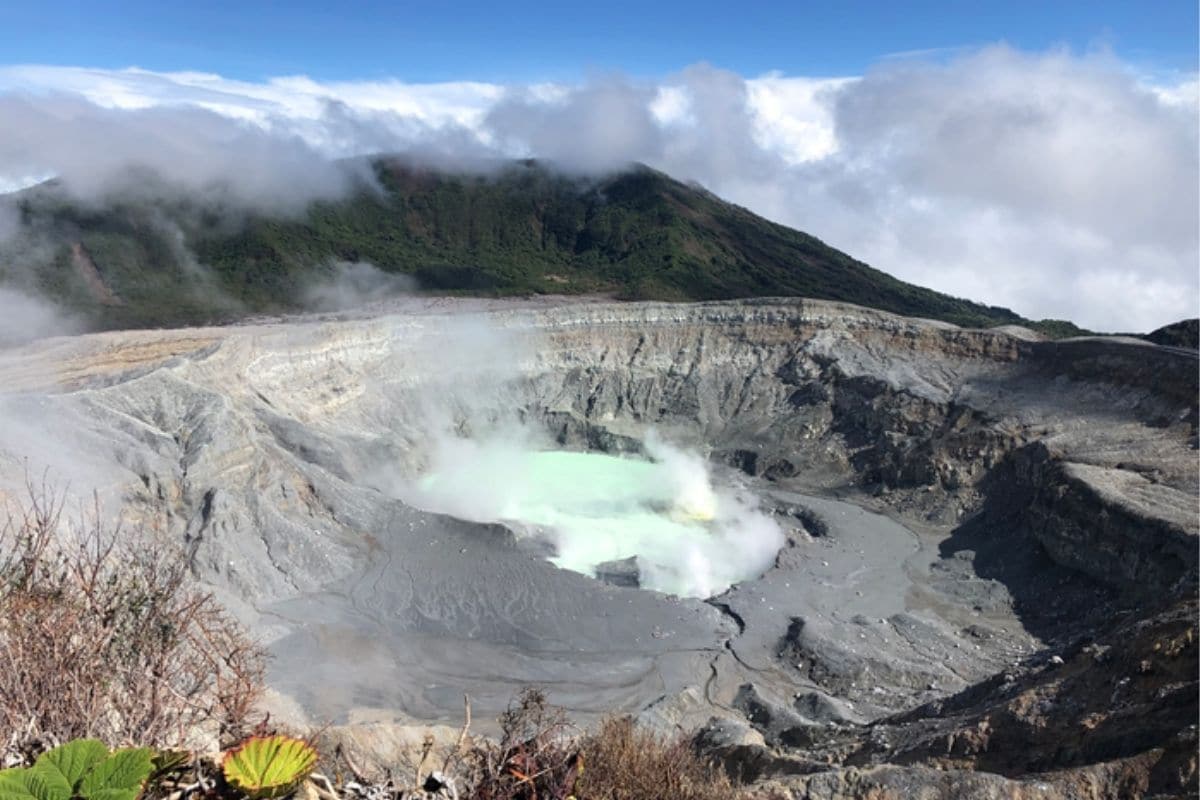

Unruly microorganisms found in a crater lake of an active volcano provide clues about the possible forms of life on the former red planet.
For years, scientists have been theorizing: could there have been life on Mars? And if so, what did those life forms look like? Researchers suspect that if life ever existed on the red planet, it must have been so-called “extremophiles.” “They may have looked a bit like unruly microorganisms found in the crater lake of the Poás volcano,” study researcher Justin Wang said. Scientias.nl.
The crater lake of Poás
The hydrothermal crater lake of Costa Rica’s Poás Volcano is one of the most hostile places on Earth. The water is extremely acidic, full of toxic metals and has scorching temperatures. In addition, phreatic eruptions cause sudden explosions of steam, ash and rock. Despite these harsh conditions, there are unruly organisms that call these hostile places home. These are so-called extremophilic microbes. And these heroic microorganisms may have been the first life forms on Earth.

The extreme Lake Laguna Caliente in the crater of the Poás volcano in Costa Rica. Image: Justin Wang
Despite the fact that few life forms can survive in such unrelenting crater lakes today, researchers suspect that things may have been different in the distant past. “Life is believed to have evolved in hydrothermal environments on Earth for many reasons,” Wang said. Such environments have water, heat and nutrients. In addition, the high activity and complex chemistry in hydrothermal environments make them promising sites for life to emerge. Finally, genomic studies of all living things on Earth suggest that we all originated from a microorganism that thrived in a hydrothermal environment.”
Mars
This also has implications for our search for former life on Mars. “Since conditions on early Mars likely resembled early Earth, it is likely that if life on Earth really arose from microorganisms in hydrothermal environments, life on Mars could have evolved similarly,” Wang explains. from. Partly for this reason, researchers are very interested in the unruly micro-organisms that live in barren crater lakes. Because we may also get a glimpse of what life – if it did exist – must have looked like on the former red planet.
Acidiphilium
Researchers traveled for a new study went to the crater lake of the Poás volcano and found that the lake is dominated by bacteria of a single ‘extremophile’ genus: Acidiphilium. “Such microbes are found in acidic environments and are known to have a wide range of metabolisms,” Wang said. “It’s important to study these because they represent some of the most extreme forms of life on Earth. If we can study how they function in these extreme Earth environments, we can also begin to understand how life outside Earth would have functioned in similar, extreme environments.”
Useful adjustments
The researchers wanted, among other things, to extensively study the biochemical processes of the organisms. To do this, they decided to sequence the DNA of the microbes. And it seems that the Acidiphilium bacteria have gone through a wide variety of adaptations to endure the extreme and harsh conditions in the hydrothermal crater lake. “We have discovered many genes that pump hydrogen ions outside the cell to make the inside of the cell less acidic,” Wang says. “We also discovered many similar types of genes that pump out toxins such as arsenic and other heavy metals. Some of the genes we found suggest that the bacteria also use sulfur, arsenic and iron to get energy from them. This whole series of genetic adaptations suggests that the microorganisms have undergone very complex adaptations that allow them to live in different conditions. And as a result, they also know how to thrive in harsh hydrothermal crater lakes.”
Quest for Martian life
The researchers believe that in our search for former Martian life, we should certainly not forget these hydrothermal crater lakes. “If life on Mars originated in a similar way to life on Earth, Martian life might have looked just like the microbes in the Poás volcanic lake,” Wang said. “Looking for life in former hot springs on Mars is therefore very important. Unfortunately, this is often overlooked and attempts to search for life on Mars tend to focus on streambeds or river deltas. However, geological records indicate that hydrothermal environments existed on Mars for billions of years. We therefore believe that hot springs are great environments for both the origin of life and the continuation of life throughout much of Mars’ history. And so we argue that former hot springs should be prioritized in the search for extraterrestrial life.”
By the way, it doesn’t even have to be that difficult. Mars rover Perseverance is currently scouring the Jezero crater, looking for traces of ancient Martian life. And there are some interesting areas on the crater rim, according to Wang, where Perseverance could take a look…
Source material:
“LASP scientists investigate life in volcanic habitats for clues to habitability on Mars” – LASP
Interview with Justin Wang
Image at the top of this article: Justin Wang